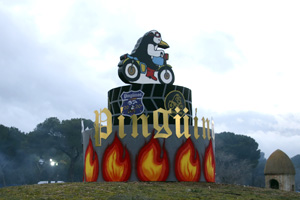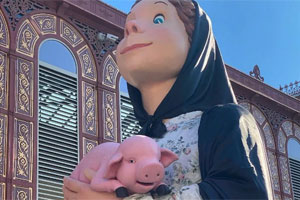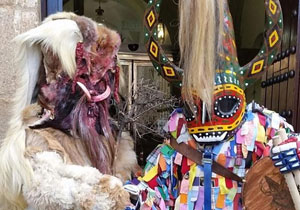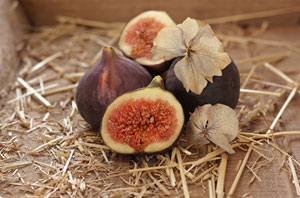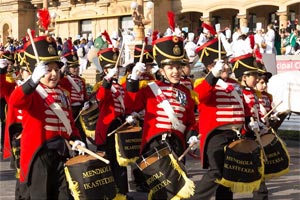Isil Bonfires Festival
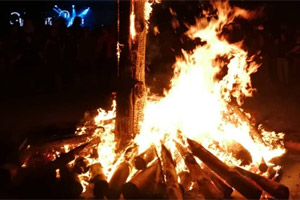
What does the festival consist of?
The Fallas of Isil, or Les Falles, is a great festival celebrated in the charming village of Isil (Pallars Sobirà) during the night of Saint John, to warmly welcome the Summer Solstice. It all begins with the preparations leading up to the festivity.
The young people of Isil head to Mount Airoto to search for logs, make the fallas or torches, and cut the main Falla. The bark is removed from the logs, which are hollowed out and filled with pieces of resinous wood.
The fire is brought down from the mountain to light the bonfires, grouping the logs or fallas into several groups to be lit during the night of the festival in the Plaza de la Vila.
It is a true spectacle to see the falleros zigzag down the mountain, carrying the fire to burn the fallas. The row of fallas becomes a snake of fire.
The falleros are welcomed by the godmothers with wine, a piece of coca (a traditional pastry), and a small bouquet of wildflowers. They tour the village until they reach the main Falla, stacking the fallas to create a large bonfire.
The crucial moment arrives when acrobatics are performed over the fire, accompanied by the Marxa dels Fallaires or Torchbearers' March.
The Ball de Bastons or stick dance follows, in which the dancers jump over crossed sticks on the ground, and the Ball Pla or Flat Dance, a traditional dance. Fire and revelry in action!
The day continues with the Bolangera, where women start dancing and invite men to join them in a circle.
Origins of the Fallas de Isil Festival
This festival is celebrated in Isil (one of the villages in the municipality of Alt Àneu) during the night of Sant Joan. It was reinstated in 1978 to commemorate the pagan celebration of the summer solstice.
There is no precise information about the origins of this festivity. However, the locals have been celebrating this fire festival for several years, in order to carry on the tradition.
Curiosities of the Fallas de Isil Festival
Here are some curious and interesting facts about the Fallas de Isil Festival:
The Fallas Festival in the Pyrenees was declared Intangible Cultural Heritage by UNESCO in 2015, as well as a National Heritage Festival of Interest by the Government of Catalonia in 2010. It is an ancient ritual to thank the gods for the harvest and good weather.
The "Pla" is a traditional couple's dance originating from Catalonia, which originated in the 17th century. It is characterized by slow movements and is divided into three parts: començament (beginning), caiguda (fall), and rístol (rebound).
The word "falla" comes from the Latin diminutive of fax (torch), referring to the bonfires and luminaries that are lit during the patron saint festivals.
The estimated number of attendees to this grand celebration is around 3,000 people.
Only about 60 falleros participate in the descent of the fallas, due to the difficulty of the path. They require physical strength and skill to make the descent, as each falla weighs approximately 35 kilograms.
When passing by the church of Sant Joan, the falleros make three crosses at the door in honor and remembrance of the deceased falleros, as well as a protective ritual.
What else can you see or do in the town if you go to the Fallas de Isil festival?
Isil is one of the most picturesque and beautiful villages in Vall d'Àneu. We recommend visiting these interesting tourist sites. You can't miss them!
- Church of Sant Joan d'Isil: This religious temple was built in the 12th century, on the remains of an ancient Benedictine monastery. It is considered a monument of transition from Romanesque to early Gothic architecture and may have been built.
- Immaculada d'Isil: A hermitage representing Catalan Romanesque architecture.
- Museo del Oso Pardo (Brown Bear Museum): A fun and interesting museum to be enjoyed by children and adults.
- Casa de I'Os (House of the Bear): This house is part of the project for the reintroduction of the brown bear in the Pyrenees.
- Baqueira Beret Ski Resort: If you enjoy skiing, you can visit one of the largest ski resorts in the Pyrenees.
Catalan Pyrenees Gastronomy
Enjoy the cuisine of the Catalan Pyrenees, based on a traditional high mountain culture. We invite you to taste the following typical dishes. They are a real delight!
- Coca with Honey: This dessert is made with honey and nuts from the Catalan Pyrenees.
- Trinchado de Col y Patata con Tocino: One of the most traditional dishes, with green cabbage kneaded into small pancakes, decorated with strips of Iberian bacon.
- Sweet Butifarra with Apple: A sweet dish that can be consumed grilled, fried, confit with apple, or baked.
- Stuffed and Roasted Lamb Leg (Pierna de Cordero Mechada or Palpis): It contains deboned and stuffed lamb leg, seasoned with garlic, parsley, onion, brandy, and wine.
- Suso: A traditional dessert made with a thin, buttery dough filled with cream. It is fried and coated in sugar.

